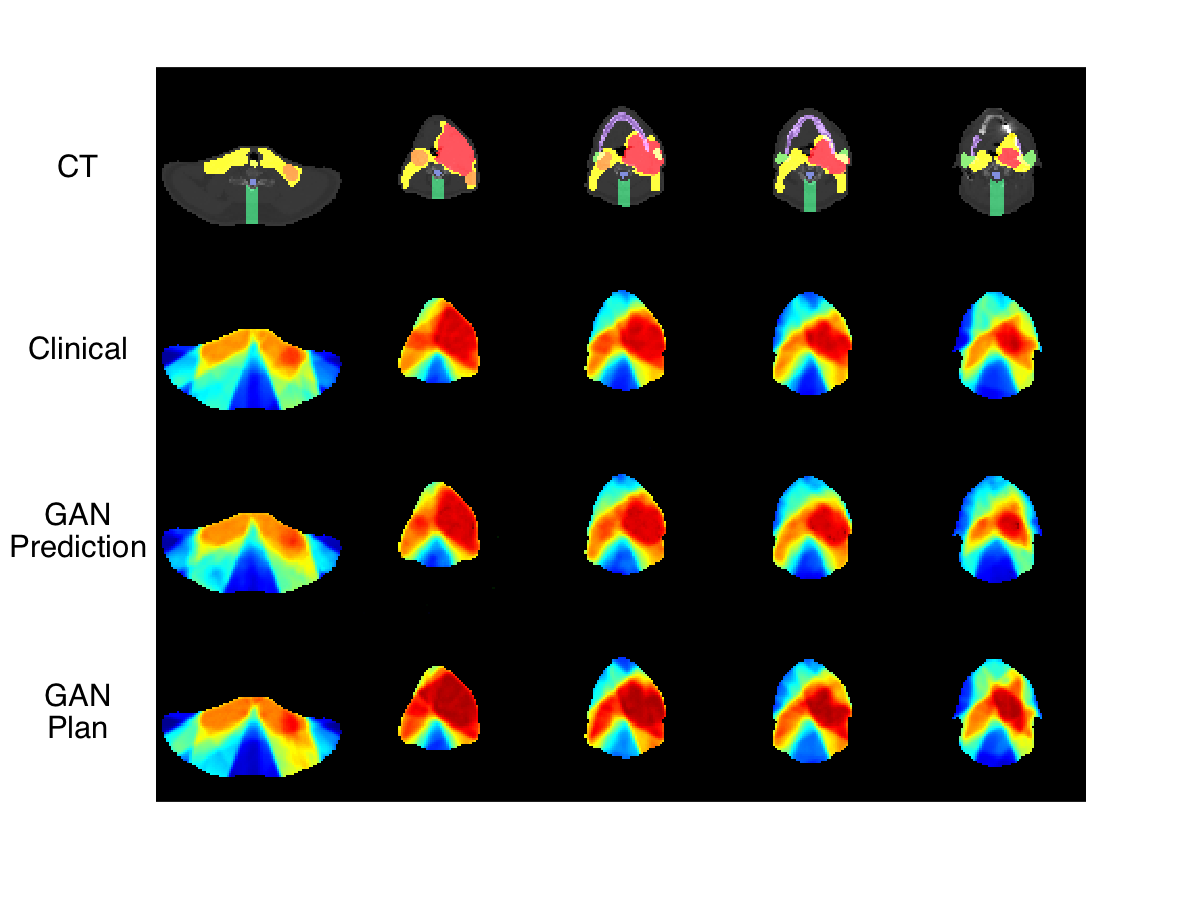Knowledge-based automated planning with three-dimensional generative adversarial networks
We develop a knowledge-based automated planning (KBAP) pipeline that generates treatment plans using deep neural network architectures for predicting 3D doses. Our pipeline consisted of a generative adversarial network (GAN) to predict dose from a CT image followed by two optimization models to learn objective function weights and generate fluence-based plans, respectively. We investigated three different GAN models. The first two models predicted dose for each axial slice independently. One predicted dose as a RGB color map, while the other predicted a scalar value for dose directly. The third GAN model predicted scalar doses for the full 3D CT image at once, considering correlations between adjacent CT slices. For all models, we also investigated the impact of scaling the GAN predictions before optimization. Each GAN model was trained on 130 previously delivered oropharyngeal treatment plans. Performance was tested on 87 out-of-sample plans, by evaluating using clinical planning criteria and compared to their corresponding clinical plans. The best performing KBAP plans were generated with the 3D GAN, which predicted dose values followed by scaling. These plans satisfied close to 77% of all clinical criteria, compared to the clinical plans, which satisfied 64% of all criteria. Additionally, these KBAP plans satisfied the same criteria as the clinical plans 84% more frequently compared to the 2D GAN model using RGB dose prediction. The 3D GAN predictions were also more similar to the final plan compared to the other approaches, as it better captured the vertical dosimetric relationship between adjacent axial slices. The deliverable plans better captured implicit constraints associated with physical deliverability. Overall, our final plans had superior performance in satisfying clinical criteria and generated more realistic predictions compared to the previous state-of-the-art.
PDF Abstract
